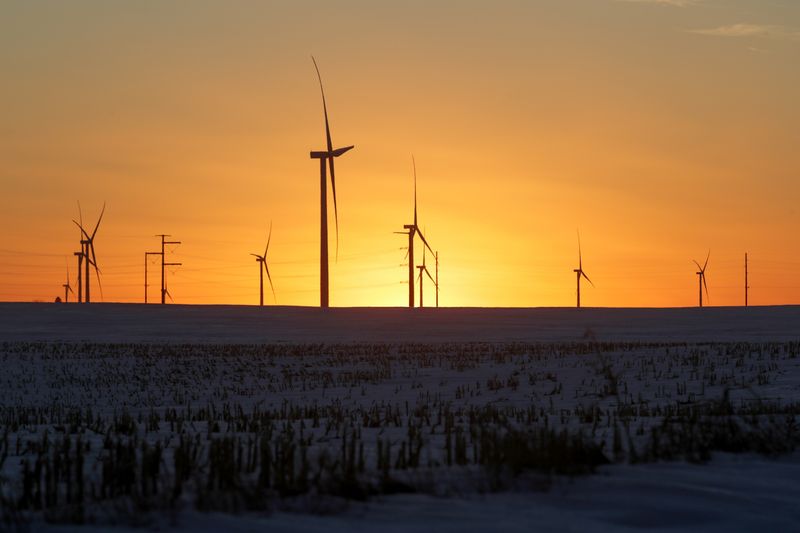(Reuters) – The bill providing coronavirus aid and funding the U.S. government that is expected to be approved on Monday contains measures to address climate change, including limiting the use of a potent greenhouse gas in refrigerants and extending tax incentives for wind and solar energy.
The bill, if passed, would mark the first time in 13 years that Congress used energy policy to tackle global warming – an issue President Donald Trump has eschewed while denying the scientific consensus that industrial activity and fossil fuel use are causing climate change.
The bill includes $1.4 trillion to fund the government through September 2021 as well as a $900 billion coronavirus aid package.
The last U.S. energy bill, passed during the George W. Bush administration, raised fuel efficiency standards for cars and trucks, mandated more use of ethanol and cut energy use in light bulbs and appliances.
Senate Democrats hailed the legislation’s climate provisions as a good start.
“Are these provisions enough to meet the demands of science? No. But are they a significant step in the right direction? Yes,” Senate Democratic Leader Chuck Schumer said in a statement.
President-elect Joe Biden, a Democrat who takes office on Jan. 20, has pledged to slash U.S. carbon dioxide emissions and to put climate change at the center of national policy.
The legislation to be passed on Monday would require U.S. companies to reduce the production of hydrofluorocarbons (HFCs), a greenhouse gas used in air conditioning and refrigerators, to 15% of 2012 levels by 2036.
That would bring the United States into compliance with the Montreal Protocol’s 2016 Kigali amendment, which Trump rejected despite widespread support from both industry and environmental groups.
The bill also extends tax credits that have helped reduce the cost of renewable energy. Solar facilities would be able to keep their 26% tax credit for two more years, while onshore wind energy projects could keep their credit for one more year.
Offshore wind projects, which have never had their own dedicated tax credit, would be offered a credit worth 30% of their cost if they start construction before the end of 2025.
The bill also directs the Department of Interior to set a goal of producing at least 25 gigawatts of solar, wind and geothermal energy on public lands by 2025. Currently, U.S. renewable capacity on public lands amounted to more than 5 GW in 2019, according to a report by The Yale Center for Business and the Environment and The Wilderness Society.
Billions of dollars would be authorized for research and development to advance technologies including carbon capture and storage, direct air capture and advanced nuclear energy. Major business groups including the Chamber of Commerce praised the legislation’s focus on technology.
Under the legislation, coal mining companies would for another year have to pay $1.10 per ton of mined coal into the Black Lung Disability Trust Fund, a federal program giving benefits to the families of coal miners who died from black lung disease. The mining industry has lobbied to halve its taxes, which also include paying 55 cents per ton from surface mines.
With coal companies going bankrupt and a spike in cases of black lung disease, the trust fund has been on the brink of insolvency.
(Reporting by Nichola Groom and Valerie Volcovici; Editing by Sonya Hepinstall)






















